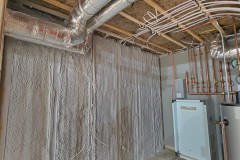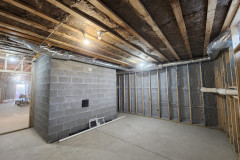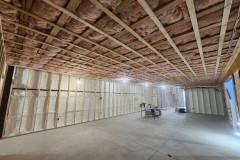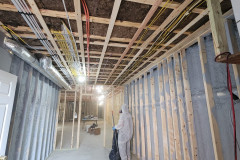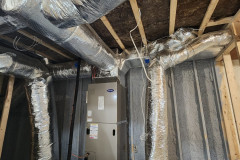Middleton MA Residential Basement Gets Insulated and More
The basement of a home in northern MA was insulated by the Green Stamp team! The installers sprayed foam insulation along the exterior walls to create an air and vapor barrier for energy efficient heating and cooling. Sound attenuation insulation was installed through out the mechanical/utility room to deliver noise control in the stud wall cavities of the interior room partitions. The exposed foam in the utility room was coated with a flame control intumescent coating for added fire-prevention. This job is an example of a complete basement insulation installation.
If your basement is noisy, damp and too hot or cold, contact us! We’ll come to you to inspect the issues in your basement and provide the best possible insulation solution for your budget.

